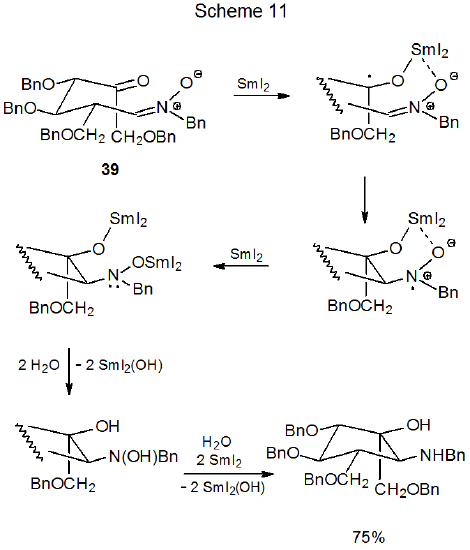IV. Ketonitrones
- Page ID
- 24555
The ketonitrone 39 undergoes radical cyclization when treated with excess SmI2 (Scheme 11).47 This reaction is similar to that shown in Scheme 9 for a related ketooxime. Both reactions depend upon electron transfer from SmI2, and each produces a new five-membered ring. These reactions are stereoselective but their selectivity is controlled in different ways. In the reaction of the ketonitrone, samarium remains coordinated with the oxygen atoms in the two developing substituent groups during reaction. This coordination insures the stereoselective formation of a cyclopentane ring in which the OH and N(OH)Bn groups are cis-related (Scheme 11). Since similar coordination does not occur during ketooxime reaction (Scheme 9), the emerging OH and NHOBn groups are not held on the same side of the ring; in fact, due to the steric size of the groups attached to the bonding carbon atoms in the radical 31, OH and NHOBn groups become trans-related in the product 32.


